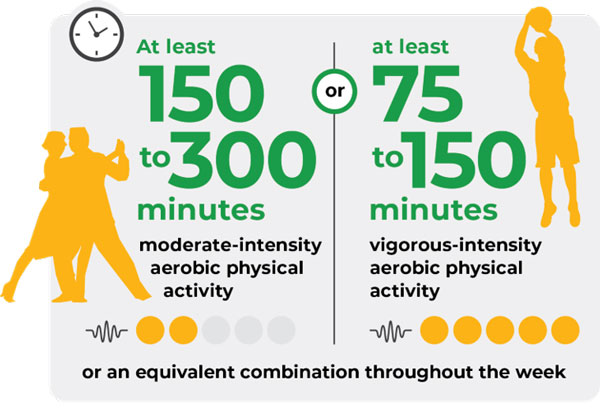2021.08.06
- 調査・研究
© 2020 SASAKAWA SPORTS FOUNDATION
© 2020 SASAKAWA SPORTS FOUNDATION
Mission&Visionの達成に向けさまざまな研究調査活動を行います。客観的な分析・研究に基づく実現性のある政策提言につなげています。
自治体・スポーツ組織・企業・教育機関等と連携し、スポーツ推進計画の策定やスポーツ振興、地域課題の解決につながる取り組みを共同で実践しています。
「スポーツ・フォー・オール」の理念を共有する国際機関や日本国外の組織との連携、国際会議での研究成果の発表などを行います。また、諸外国のスポーツ政策の比較、研究、情報収集に積極的に取り組んでいます。
日本のスポーツ政策についての論考、部活動やこどもの運動実施率などのスポーツ界の諸問題に関するコラム、スポーツ史に残る貴重な証言など、様々な読み物コンテンツを作成し、スポーツの果たすべき役割を考察しています。
2021.08.06
Generations rarely have the opportunity to reset public opinion and effect behaviour change for good. Post pandemic two unequal movements have a lot in common and will be the focus of governments for some time. The way we think about the future of the planet and our own health will see planetary health at the heart of personal health for years to come. There are four numbers we should consider, 50 billion tons and zero, for climate change, and 150 minutes and zero for personal health.
Climate scientists estimate that the world adds round 50 billion tons of greenhouse gases to the atmosphere each year while zero is the figure most climatologists believe we need to aim for. After a year when the world came to a virtual halt the same scientists estimate greenhouse gasses dropped by around 5 billion tons so, even if we give up flying and driving, it is a long way to zero. The UK National Health Service, NHS, offer similar guidelines to almost every major health organisation across the world. For adults (19-64) 150 minutes of moderate intensity activity a week. Despite the widely reported benefits most adults in the UK do not meet the recommendations. The NHS estimate around 36% do zero. The Academy of Royal Colleges estimate over 40% fail to do 30 minutes a week. In the USA Harvard Health estimate 80% of the population are not meeting the guidelines. There is a long way to go in most countries to making activity satisfying.

Source:WHO GUIDELINES ON PHYSICAL ACTIVITY AND SEDENTARY BEHAVIOUR
In 2020 the World Health Organisation, WHO, updated their physical activity guidelines for the first time in a decade and the biggest change worth noting is that all movement now counts. Fiit Insider says, ‘forget fitness, movement health is a trillion-dollar opportunity’. Prioritising healthy balanced movement has become the focus of both the largest companies in the world and countless start-ups hoping to emulate the success of Calm (the Nike of the Mind and a $2bn valuation) and Headspace (corporate focused healthcare strategy with some 65 million downloads) both rapidly gaining acceptance as part of the thriving wellbeing economy.
Some companies are using their size and scale to make a difference to both planetary and personal. Let’s start with the largest, Apple. CEO Tim Cook, who is both a nature and a fitness obsessive, works on a 175 acre campus where 85% is greenspace and planted with 7,000 trees. Apple has promised to become fully carbon neutral by 2030 and that includes the entire supply chain and lifecycle of its products. Cook believes and has said on a number of occasions that the company’s greatest contribution will be in health and wellness. Since its debut the Watch has been positioned as a tool to help improve our health and in 2020 had around 55% of the global smartwatch market according to Statista. With the launch of Fitness+, powered by the Watch, its exercise in simplicity.
Since WHO updated their guidelines Amazon have introduced Movement Health, a new feature for Halo, its wrist worn health and fitness tracker. Combining expertise in artificial intelligence, computer vision and machine learning Movement Health will produce a personalised programme of exercises to improve the everyday movements we all do without thinking. At the same time Amazon co-funded The Climate Pledge, a commitment to be net zero across all businesses by 2040, ten years ahead of the Paris Agreement and 100% renewables by 2030.
Google is interested in the $3.5 trillion US healthcare market with its purchase of Fitbit for around $2 billion and investment in over 60 health related start-ups. Google are also aiming to be carbon free by 2030 and part of the solution to climate change. More people searched for ‘How to live a more sustainable lifestyle’ in 2020 than ever before. Microsoft plans to go a stage further and become carbon negative, removing more greenhouse gases than it emits, by 2030.
Big or small, companies are seeing shareholder activism is on the rise and environmental, social and governance (ESG) is becoming the focus. The investment workforce is increasingly made up of Millennials for whom ESG is seen as vital to both the planet and workforce health. Harvard Business Review found that companies are being held accountable by shareholders for ESG performance with an ever-growing number of environmental and social shareholder resolutions being filed. Climate Action 100+, which includes more than 320 investors representing $32 trillion, is lobbying the largest greenhouse gas emitters to address climate change and to set targets to cut emissions. Mark Carney, the former Bank of England governor, is now the United Nations envoy for climate action and finance tasked with persuading policymakers, chief executives, bankers and investors to focus on the environment. Developing standards and reliable systems to measure ESG performance will become more common as external reporting becomes accepted practice.
The only listed fitness company on the London Stock Exchange is The Gym Group. With over 180 sites their ESG policies are important and explained in the annual report along with a case study on its first low carbon gym at Beverley. An air sourced heat pump removes the need for a gas supply and air conditioning, lighting and water are on sensors to improve efficiency. Where the company controls the electricity supply it has a green contract for all sites. The UK Streamline Energy & Carbon Reporting (SECR) Regulations came into force in April 2019 replacing the Carbon Reduction Commitment (CRC) energy efficiency scheme. GLL, the largest charitable social enterprise in the UK, with over 58 million visitors across 270 plus leisure centres employ 13,000 staff who are helping improve personal health. Renewable energy from 51 sources helps the environment. So far 46 solar installations, 4 biomass boilers, and an Air Source Heat Pump have been installed. GLL in 2019 achieved zero waste to landfill.
Mini miracles of climate change are happening all over the UK, with 3 million new gardens created during lockdown. The Scottish Parliament, for example, passed the Community Empowerment Act and in 2018 Part 9 came into force where local authorities have to develop a food growing strategy including identifying land that could be used by the community for growing vegetables, fruit, herbs and flowers. A bee line, a green corridor of flowers planted to attract pollinators like bees and butterflies, will extend 26km from Rutherglen in South Lanarkshire to Cathkin Braes Country Park, Glasgow, in time for the United Nations Climate Change Conference (COP26) at the SEC Centre Glasgow 31 October till 12 November 2021. One of many community projects developed by Grow 73, who are increasing the biodiversity and helping combat climate change at a local level. BBC TV Countryfile, have launched an ambitious two year project, ‘Plant Britain’ galvanizing everyone to get planting and help combat climate change with the added benefits to our wellbeing and wildlife, plantings to date total just over one million. Caring for the environment could be seen as an altruistic way to burn calories.

Source: Website of UN Climate Change Conference (COP26) (https://ukcop26.org/)
The potential for design to promote environmental and social change is the theme of the London Biennale which has temporarily re-wilded Somerset House courtyard with 423 mature trees which draws attention to the UN’s 17 sustainable goals. Since the early 80’s the Prince of Wales has promoted environmental awareness, been a champion of the natural world and in 2007 started to encourage businesses to take action on climate change. Now Prince Charles is urging the world’s insurers to rise to the challenge of tackling climate change and to innovate new products, his Sustainable Markets Initiative Insurance Task Force at Lloyd’s of London is to help lead the industry towards greener goals. Like father, like son, Prince William, Duke of Cambridge, along with TV naturalist Sir David Attenborough have launched ‘Earthshot’ which aims to find solutions to repair the planet by 2030. Five prizes will be awarded each year for the next ten years to provide at least 50 solutions to some of the world’s environmental problems. The five ambitious goals are: protect and restore nature, clean our air, revive our oceans, build a waste-free world and fix our climate.
These five goals and more will be on the agenda in Glasgow where COP26 could be the catalyst and showcase for Britain’s nascent zero-emissions sports and fitness industry.
The UK Sports Think Tank recently published that 69% of sports fans aged 16-24 support climate change. Young people believe that sport should do more to act sustainably and help the community according to new research from Global Web Index. Perhaps there’s a subliminal message in the popularity and growth of outdoor activities, gyms, functional training and classes as sustainable exercise. The number of outdoor walks logged on Strava and Apple Health tripled in 2020.
MDL Fitness is a holiday and fitness start-up which grew out from the MDL Marina. MDL have installed solar panels generating so far 150,000kWh from April 2020 to February 2021, the equivalent of planting 1,500 trees per year across the three sites. The new range of green gyms will be powered by solar panels and the fitness equipment from SportsArt converts human kinetic energy into electricity.
SportsArt’s equipment is installed at SO51Fitness, Romsey. Silver winner of the Future Proofing & Innovation Award 2020, where 74% of the energy created by members during their workout is converted into utility grade electricity. SO51 members can watch on screen the workouts turn into watts and be uploaded to the local grid and monitor their own position on the ‘Green Member’ leader board. Three levels of ‘green’ memberships are available - indoor, outdoor and online - putting personal health at the heart of planetary health.
In July 2020 the RSG Group was the winning bidder in a court approved auction to acquire Gold’s Gym brand and the new campus in Berlin Germany at 55,000sq ft is the flagship site with a focus on sustainability. The cardio area has 10 meter high trees that filter pollutants, training floors are made from recycled car tyres, wall tiles are made from recycled computer monitors and electricity is generated from 150 bicycle ergometers, a solar ‘flower’ that saves solar energy and the heat and power plant runs on biogas. Quite possibly the greenest gym in the world which is CO2 and climate neutral.
Back in the UK a precision-engineering tech-focused start-up in Birmingham, with a passion for fitness, lit up sports apparel Gymshark’s carbon-free Christmas Tree just for fun. On a more serious note Energym exercise bike for home is harnessing my energy, converts it into electrical power, stores it in a portable re-chargeable battery (known as the OHM) which then powers my home office. So my MacBook Air, ipad, Phone, smartwatch, printer and come December the Christmas tree all powered by clean electricity. When training the OHM turns into a personal power meter displaying my Functional Threshold Power, FTP, using a 5 colour display to show how well I’m doing. No wonder they call Energym the Tesla of fitness. If all 10.4 million fitness members used Energym power that would generate 200 watts of clean energy per person per workout which would power an estimated 250,000 homes each day.
‘Stay at home’, ‘Protect the NHS’, ‘Save Lives’ was the Government’s message during lockdown and the slogan worked and changed public behaviour. In normal times the NHS is there to protect us, during the pandemic the message was we had to protect it and ourselves. The impact of this reversal could help kickstart the self-care generation, taking personal responsibility to improve our health but it needs a catalyst.
Climate change has a growing global movement led by young people and media stars like Greta Thunberg. Greta first staged a protest in August 2018 outside the Swedish Parliament holding a sign ‘School strike for Climate’. More than a million people regularly demonstrate in thousands of strikes for climate events in over 100 countries on Fridays. Her influence on the world stage has been described by The Guardian newspaper as the ‘Greta effect’ winning many awards including three consecutive nominations for the Nobel Peace Prize 2019-2021.
Climate change has so many official and unofficial envoys that have an impact, including Special US Presidential Envoy John Kerry, school children, the UN Race to Zero campaign, the Global Earth Challenge (the World’s largest environmental movement), where total actions at the time of writing are 2,688,645,733. From ESG action to a simple Bee Line, climate change is a concern for everyone and rightly so. There is no comparative concern for improving the health of individuals and by default the nation. Post covid there is no movement towards a healthy balanced movement.
Yet social movements can and do make an impact. It’s 52 years since the Stonewall riots in New York, an event recognised as the start of the modern gay liberation movement. Fast forward to the Euro 2020 football, England’s Captain Harry Kayne and Germany’s Manuel Neuer wore rainbow armbands to mark the end of Pride month and allyship with LBGT+ communities around the world. The rainbow has become a powerful symbol, adopted by many during the pandemic and used extensively to say thank you NHS.
The nascent social ‘movement’ needs to adopt a symbol that the vast majority of the population can relate to and over time emulate. Movement needs a broader perspective than just returning to previous direct debit and club numbers. A rebounding society should not mean a return to the status quo but the same spirit of tenacity and creativity that we saw in the face of extreme uncertainty needs to be relit. Individuals know, simply doing more exercise, is just like a marriage vow, it’s an expression of commitment but not a guarantee of success. The relationship between the exercise dose and improving health is confusing and needs more research and then education. Doctors and academics agree that physical activity affects health span, morbidity, more than life span, mortality. Simply put an unhealthy lifestyle affects morbidity twice as much as mortality.
Movement, (noun) is an act of moving, ‘a healthy balanced movement of the body’.
Movement, a change of development, ‘we will see planetary health at the heart of personal health’.
レポート執筆者

David Minton
Founder, LeisureDB
LeisureDB for the most accurate and insightful data and reporting on the fitness industry.
https://www.leisuredb.com/
Special Advisor, Sasakawa Sports Foundation